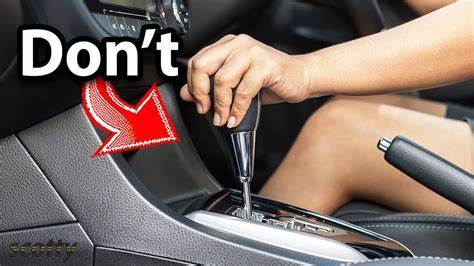Whether you’re on a budget, looking for a reliable ride, or just curious about the used car market, purchasing a used car is an attractive option. But, like any big purchase, there are certain warning signs that should make you think twice before signing off on a used car loan or paying the money to the seller. In this article, we’ll explore what to look out for when shopping for a pre-owned car so that you can make the best decision for your financial situation.
What to Look Out for When Buying a Used Car
-
Too Many Owners
When shopping for a used car, it’s crucial to consider the number of previous owners. A high number of owners can signal potential issues with the vehicle and should not be overlooked. The car may have been exposed to various driving styles and conditions, making it hard to determine its true condition.
Even if the current owner claims to have taken good care of the vehicle, there is no way to know the same about previous owners. Moreover, if a car is only five years old but already has four owners, it’s a red flag and raises concerns about its reliability and performance. It could indicate underlying problems or dissatisfaction with the car, making it important to carefully consider all aspects before making a decision.
-
Lack of Repair Records
When buying a used car, it’s important to examine the repair records provided by the seller. If these records are incomplete or inaccurate, it’s safe to assume that the car has not been adequately serviced. This should make you cautious about the car’s condition and prompt you to have it thoroughly inspected by a trustworthy mechanic.
On the other hand, if the seller provides comprehensive and accurate repair records, it’s a good sign that they have taken the maintenance and repair of the car seriously, and the vehicle has likely been well taken care of.
-
Mileage Concerns
One of the most important factors to consider when buying a used car is the vehicle’s mileage. Higher mileage can indicate that a car has been driven more and is, therefore, more likely to have wear and tear issues. Here are a few things to keep in mind when evaluating a car’s mileage:
Average Mileage: The average annual mileage for a car is around 12,000 to 15,000 miles. If a car has significantly more mileage than this, it may be a red flag that it has been driven more and is more likely to have issues.
Unusual Mileage: If the mileage on a car seems too low for its age, this could indicate that the odometer has been tampered with, which is illegal in most countries. Be wary of a car that has significantly less mileage than what would be expected for its age.
Condition vs. Mileage: The condition of the car should match its mileage. If a car has high mileage but is in excellent condition, this may indicate that it has been well-maintained. Conversely, if a car has low mileage but is in poor condition, this may suggest that it has been poorly maintained or has been involved in an accident.
-
Dents and Damages on Outside
When shopping for a used car, it’s important to watch for any visible signs of damage. If a car has a lot of scratches, dents, or other types of exterior damage, this could indicate that the previous owner was not very careful with the vehicle. This could also lead to additional costs for repairs in the future.
To avoid these issues, it’s a good idea to look for a car that is in good condition and free from any major dents or scratches. This will help ensure that you are making a wise investment and won’t have to spend extra money on repairs down the road.
-
Avoid High-Performance Cars
The sight of a high-performance car speeding down the road can be tempting, making us dream of owning one. However, it’s important to be cautious when considering a used high-performance car. While the idea of owning a fast car may be appealing, the cost of repairs and maintenance can quickly add up and become a burden.
Buying a fresh, new high-performance car can save you the hassle and expenses of fixing up an older model. In the long run, it’s better to invest in a car that is in good condition and will provide you with a reliable and enjoyable driving experience without the added stress of costly repairs.
-
Cars that Emit Smoke
A car that emits smoke is not only unsightly, but it can also indicate serious underlying problems with the vehicle. While it may be common to expect some smoke from a used car, excessive smoke is a red flag that should not be ignored. The smoke can signal that the previous owner drove recklessly, leading to damage to the engine.
Additionally, a smoke-emitting car is often an indicator of a poorly maintained engine, which can lead to costly repairs down the road. To avoid these issues, it’s best to steer clear of buying a car that emits excessive smoke.
-
Uneven Paint
An uneven paint job can be a sign of a bigger problem when buying a used car. Here are a few things to keep in mind when evaluating a car’s paint job:
Matching Colors: Check the colour of the paint on different parts of the car to see if it is consistent. If there are different shades of colour, it could indicate that the car has been repainted or had parts replaced.
Uneven Application: Look at the car’s body to see if the paint has been applied evenly. If there are areas with drips, runs, or an uneven texture, this could indicate that the paint job was done poorly or in a rush.
Bubbles or Rust: If you notice any bubbles or rust spots on the car’s body, this could indicate that the car has been damaged and repaired. The paint may have been applied to hide the damage, but it could also be a sign of further corrosion underneath the paint.
Body Work: Check for any signs of bodywork that may have been covered with a new paint job, such as dents or scratches. This could indicate that the car has been in an accident or has suffered other types of damage.
-
Oil And Transmission Fluid
The oil and transmission fluid in a car can be important indicators of its overall maintenance history. If the oil is old and hasn’t been changed regularly, this could be a sign that the car hasn’t been well taken care of. This could lead to further wear and tear on the engine and other parts, which could result in expensive repairs in the future.
However, oil and transmission fluid are just one piece of the puzzle. It’s best to have a mechanic or someone knowledgeable about cars take a look under the hood to get a better idea of the car’s condition.
Final Thoughts
Purchasing a pre-owned vehicle can cause anxiety for individuals who lack knowledge in mechanics. However, with a little effort to overcome these challenges, you can reap significant benefits from a used car that you may not have considered.
Author Bio: Shiv Nanda is a financial analyst who currently lives in Bangalore (refusing to acknowledge the name change) and works with MoneyTap, India’s first app-based credit-line. Shiv is a true finance geek, and his friends love that. They always rely on him for advice on their investment choices, budgeting skills, personal financial matters and when they want to get a loan. He has made it his life’s mission to help and educate people on various financial topics, so email him your questions at shiv@moneytap.com


































